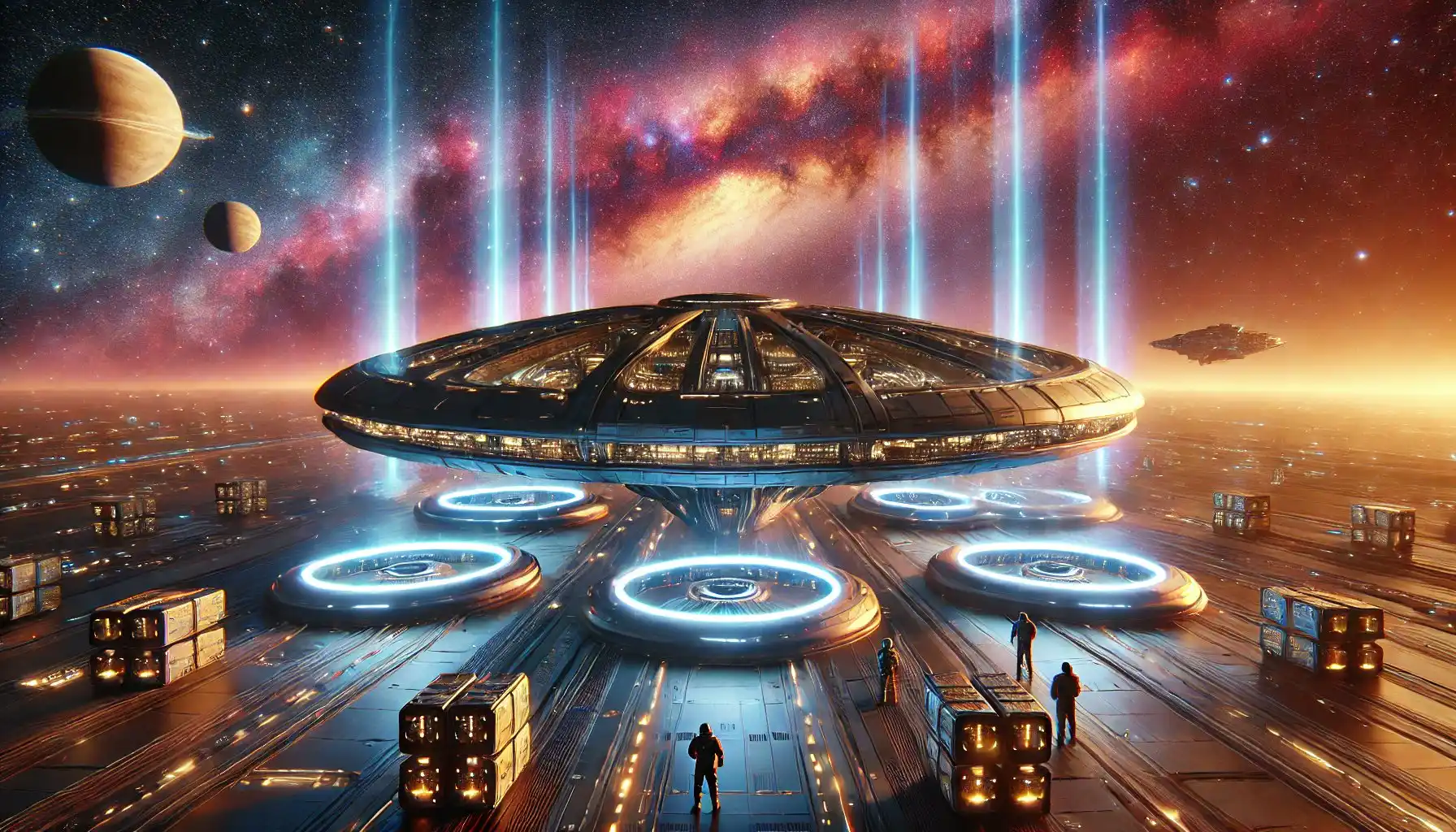Introduction
Fusion Research
Alternative Space Technologies
Global Expenditure on Fusion and Space Technologies
Motivations Behind Investments
Public Awareness and Goals
Political and Public Support
Conclusion
Humanity’s Choice
-
Enduring Poor Health from Ultra-Processed Foods: Leading to excessive global healthcare spending in the trillions.
-
Continuing Military Competition and Conflict Preparation: Resulting in immense defense spending in the trillions.
-
Investing in Aerospace Travel to Become a Multi-Planetary Expedition Species: Supported by developments like nuclear reactors and fusion reactors.
Fusion vs Fission SMR (Small Modular Reactors)
Organizational Philosophies and Energy Use
China’s Energy Policies
-
Massive Increase in Electrical Output: Since 2000, China’s electrical output has grown by several hundred percent — approximately 300-500% over two decades. This is far greater than the growth seen in the USA, Canada, or Europe. The growth has been driven by a need to support China’s fast-growing economy, urbanization, and technological advancements.
-
Diverse Energy Sources: While China has invested heavily in renewable energy sources such as wind, solar, and hydroelectric power, a significant portion of its energy growth has come from coal-fired power plants. As of recent years, China has continued to build new coal plants to meet its energy demands despite global pushes for reducing fossil fuel dependence.
-
Leading Global Energy Consumption: By 2023, China was the largest consumer of electricity in the world, with its consumption more than quadrupling since 2000. This rapid increase reflects the scale of industrial and economic activities that have taken place over the last two decades.
-
Infrastructure Expansion: China’s infrastructure development, including new cities, manufacturing hubs, and large-scale technological projects, has fueled this growth in electrical output.
Summary for China
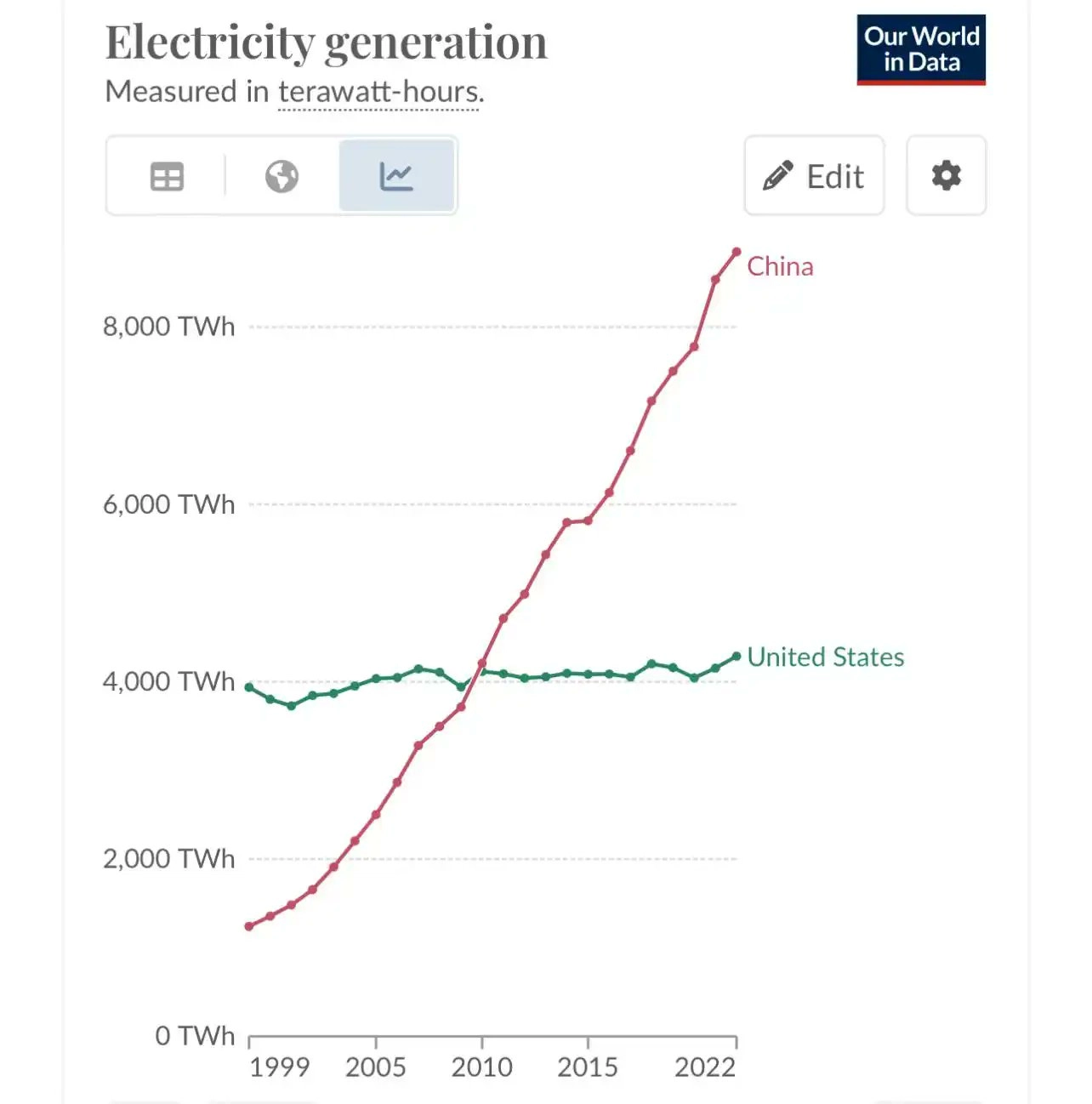
Summary for the USA, Canada, and Europe
-
USA: The increase in electrical output since 2000 has been modest, with a growth of approximately 10-20%. The focus has been on transitioning from coal to natural gas and increasing renewable energy sources like wind and solar, rather than significantly expanding total output.
-
Canada: Canada’s growth in electrical output has also been modest, in the range of 10-15% since 2000. The country has invested heavily in renewable energy, particularly hydro-power, but the overall increase in total output has been steady rather than dramatic.
-
Europe: Europe has experienced minimal growth in total electrical output, often in the range of 5-15% over the last two decades. The primary emphasis has been on enhancing energy efficiency and expanding renewable energy sources such as wind, solar, and hydroelectric power, rather than increasing total generation capacity significantly.
In comparison, China’s energy output increased by several hundred percent during the same period, driven by rapid industrialization, economic expansion, and significant investment in coal-fired power plants and other energy sources.
Call to Action
Let’s fix humanity by setting goals that require building sustainable systems that work effectively on Earth rather than relying on coal plants. Encouraging technological maturity and philosophical shifts towards sustainable and exploratory endeavours, such as those promoted by SpaceX and Team SGT, can drive progress away from historical reliance on coal-fired energy, and help improve China to enter 21st century methods of technological progress that are at the professional level.
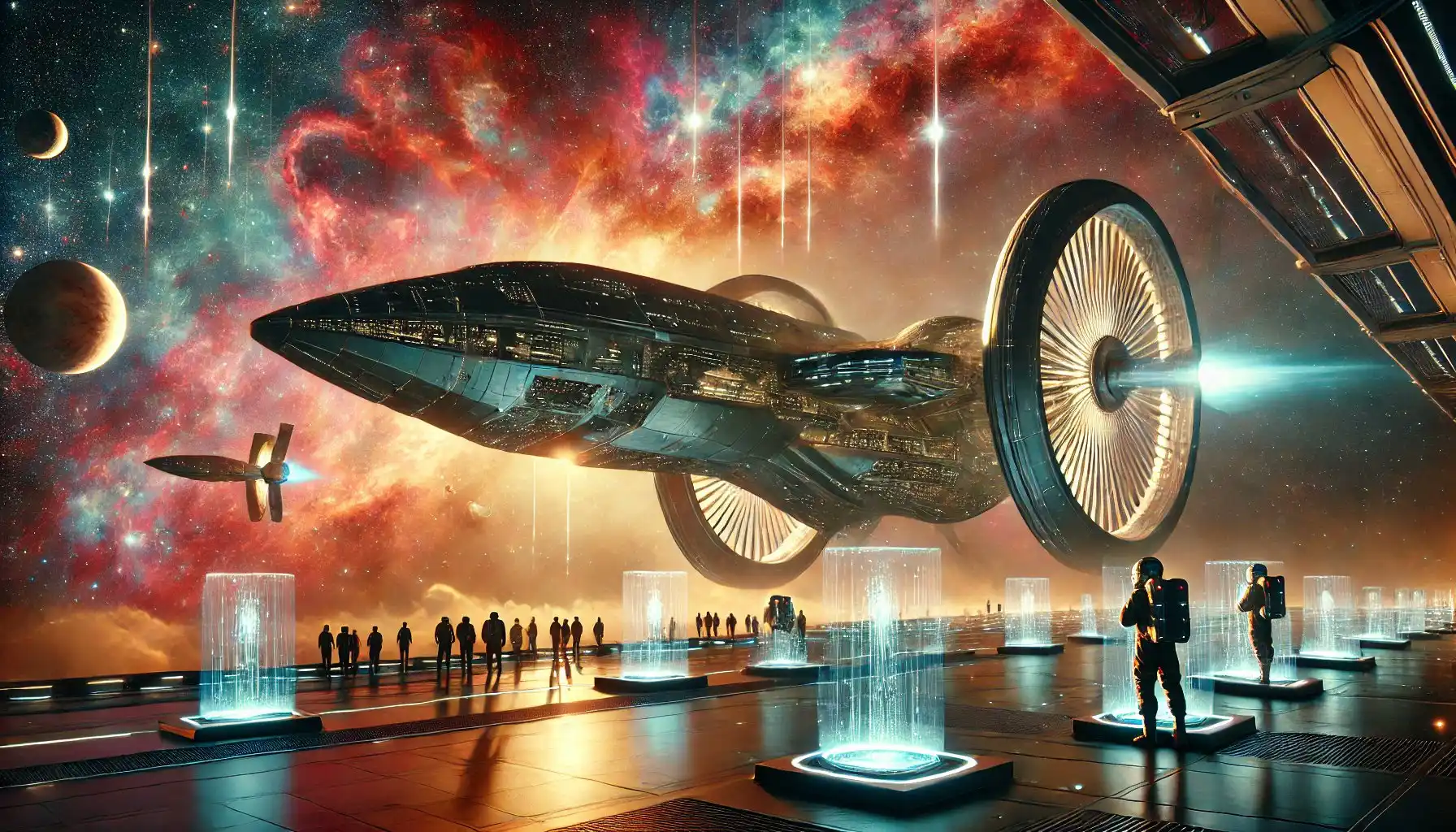
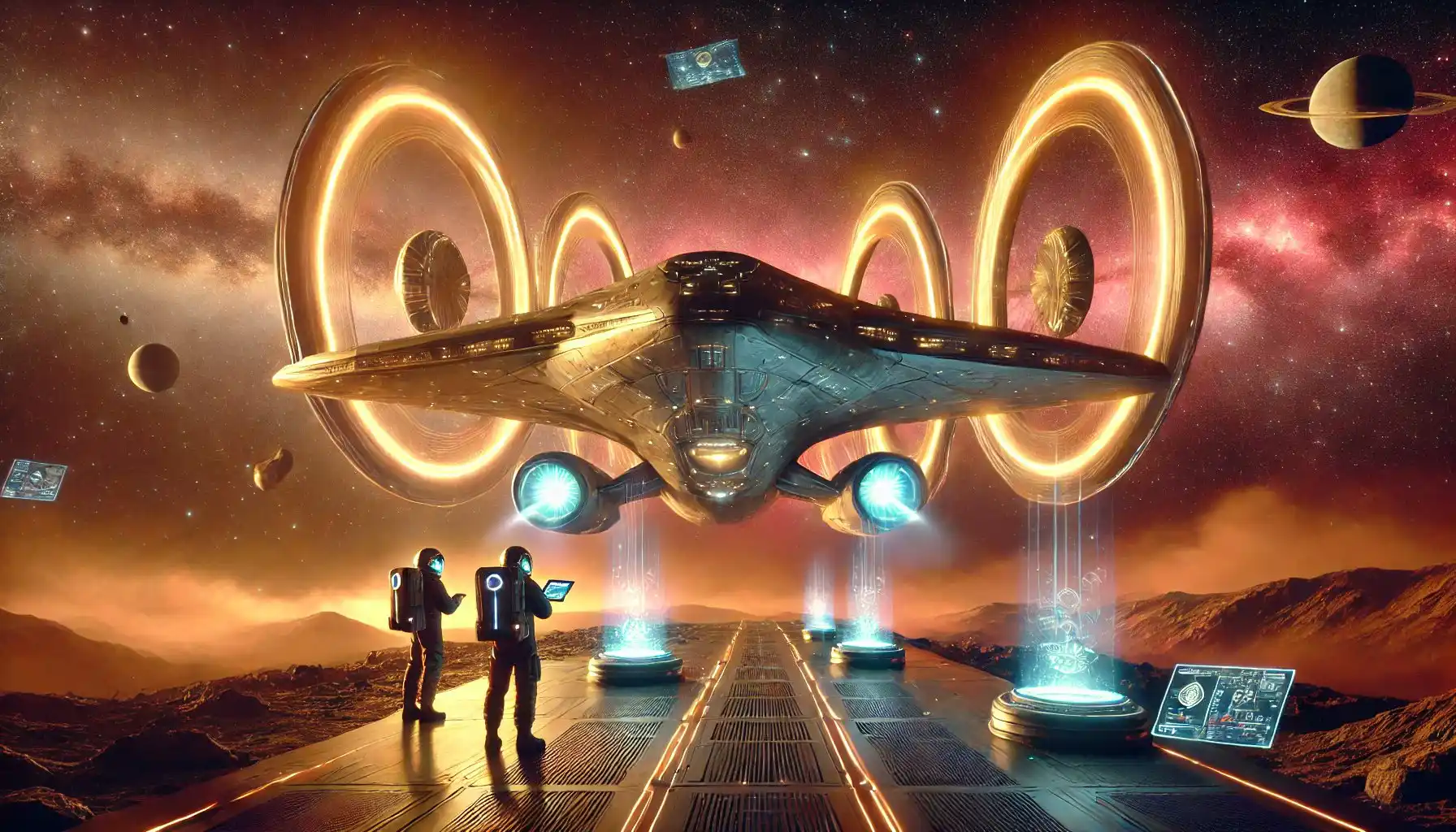
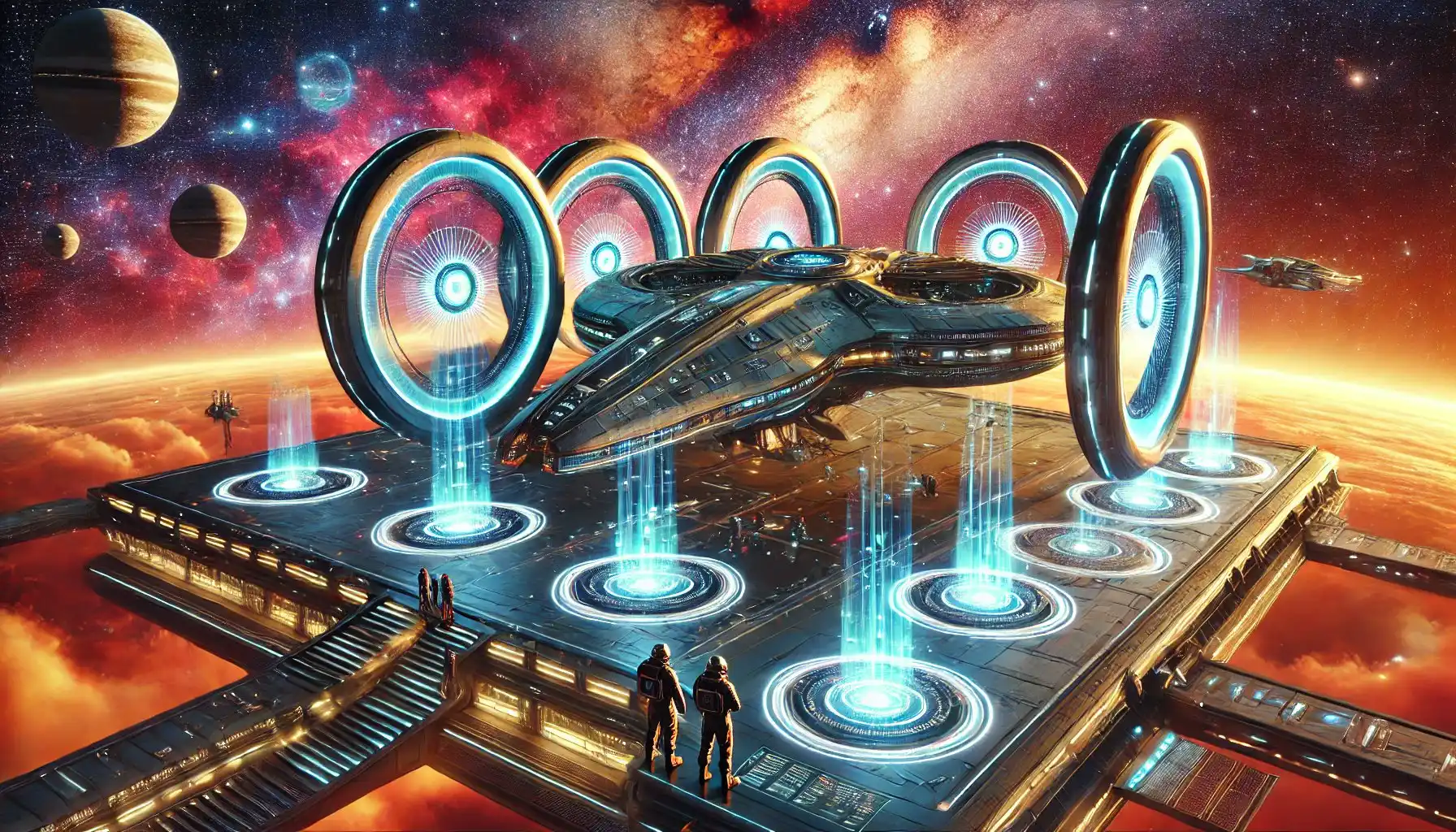
Related Content:
Title: “Navigating the Omega Point: A Journey with Valentin Picard and Q from OpenAI” https://x.com/SkillsGapTrain/status/1851458468450091296
Video in Question: Title: “Dawkins vs Peterson: Memes & Archetypes | Alex O’Connor Moderates | EP 491” https://youtu.be/8wBtFNj_o5k?feature=shared
Title: “The Evolution and Philosophy of Technological Progress: Beyond Postmodernism” https://x.com/SkillsGapTrain/status/1851187087611199535
Title: “These Are Trump’s X-Men | Dr. Jordan B. Peterson” https://youtu.be/YTJZhsGmWi8?feature=shared
Title: “Terence McKenna Was a Futuristic Genius” https://youtu.be/NJMKuswemhc?feature=shared
Title: “Forging Canada’s Future: A Unified Curriculum of Tradition and Technological Mastery” https://x.com/SkillsGapTrain/status/1850028223909810680
Title:“Yes, sir! Admiral! From our forward operating base at Starbase in Boca Chica, Texas (and eventually Alberta too) — our launchpad for the stars — we’re fully prepared to bring the Starfleet Academy and then Starfleet to life.” https://x.com/SkillsGapTrain/status/1828254951375536131
@elonmusk, @SkillsGapTrain Title:🚀”Starfleet Academy Curriculum v0.1 is Complete! 📷 has crafted a rigorous program as the first step toward building the headquarters for Starfleet.” https://x.com/SkillsGapTrain/status/1850033540093616533
@ABDanielleSmith Title: “Excellent progress, Danielle! Together, and with the power of online engagement, we’re zeroing in on the real threats to the people of Canada. https://x.com/SkillsGapTrain/status/1851194705985306712
Title: “Rediscovering Balance: Autonomy and Control in the Age of AI” https://skillsgaptrainer.com/autonomy-and-control-in-the-age-of-ai/
Title:“Creating Worlds: How the Genesis Sphere Brings Life to Star Systems” https://skillsgaptrainer.com/creating-worlds-genesis-sphere/
Title: “Designing the 21st Century “Enterprise”: A Fusion of SpaceX Starships and Sci-Fi Vision” https://skillsgaptrainer.com/designing-the-21st-century-enterprise/
Title: “Roots of Knowledge: How Religion & Philosophy Shape Moral Foundations in an Era of Ideological Chaos”
Title:“Echoes of the Future: How Star Trek’s Vision Mirrors Our Reality” https://skillsgaptrainer.com/echoes-of-the-future/
Title: “Engineering the Moon into a New Earth: A Positive Tech Vision for Sustainable Space Colonization and Engineering The Next Generation” https://skillsgaptrainer.com/engineering-the-moon-into-a-new-earth/
Title:“Echoes of the Past: The Best of Two Worlds” https://skillsgaptrainer.com/echoes-of-the-past-the-best-of-two-worlds/
Title: “Echoes of the Past: The Best of Two Worlds (3 Film Saga)” https://youtu.be/WFY4kYMmt04?feature=shared
Title: “Charting the Course: Realigning the AI Safety Board for a Future Forged in Innovation and Exploration” https://skillsgaptrainer.com/charting-the-course-realigning-the-ai-safety-board/
To see our Donate Page, click https://skillsgaptrainer.com/donate
To see our Instagram Channel, click https://www.instagram.com/skillsgaptrainer/
To see some of our Udemy Courses, click SGT Udemy Page
To see our YouTube Channel, click https://www.youtube.com/@skillsgaptrainer
